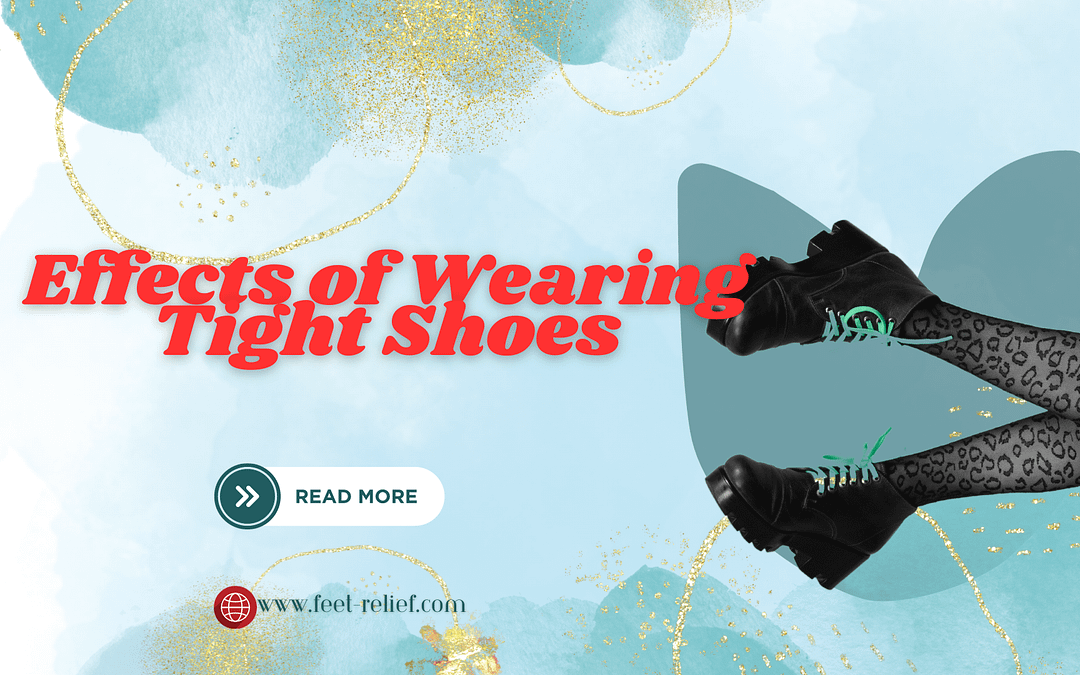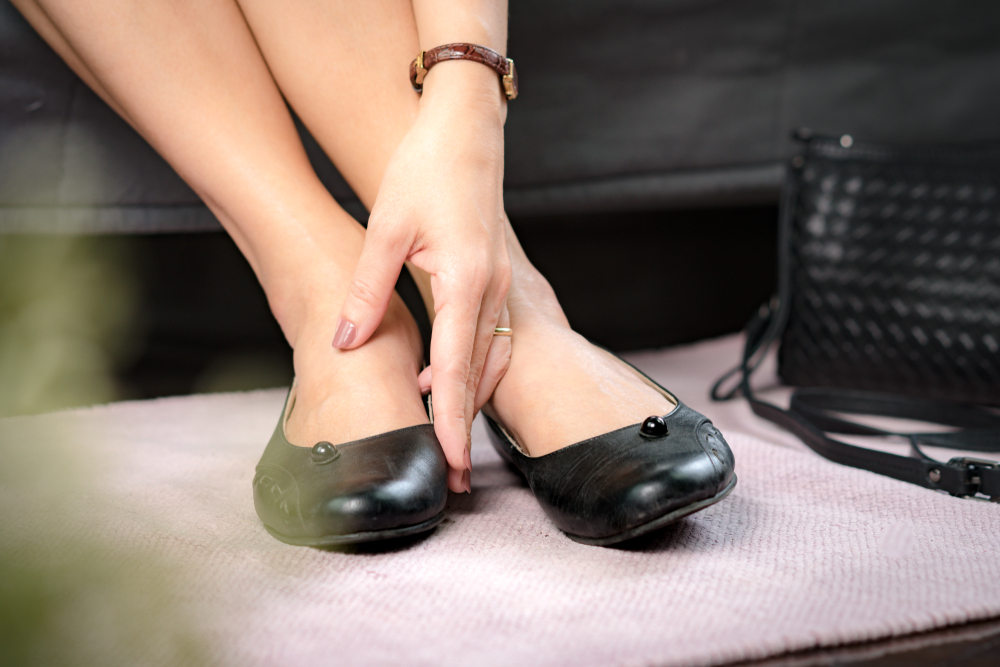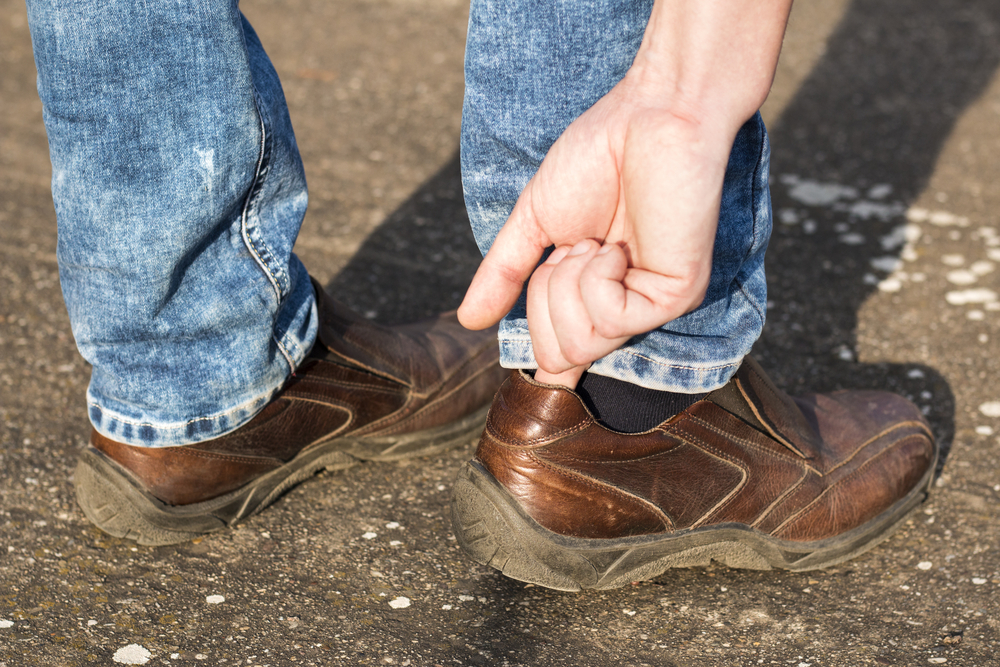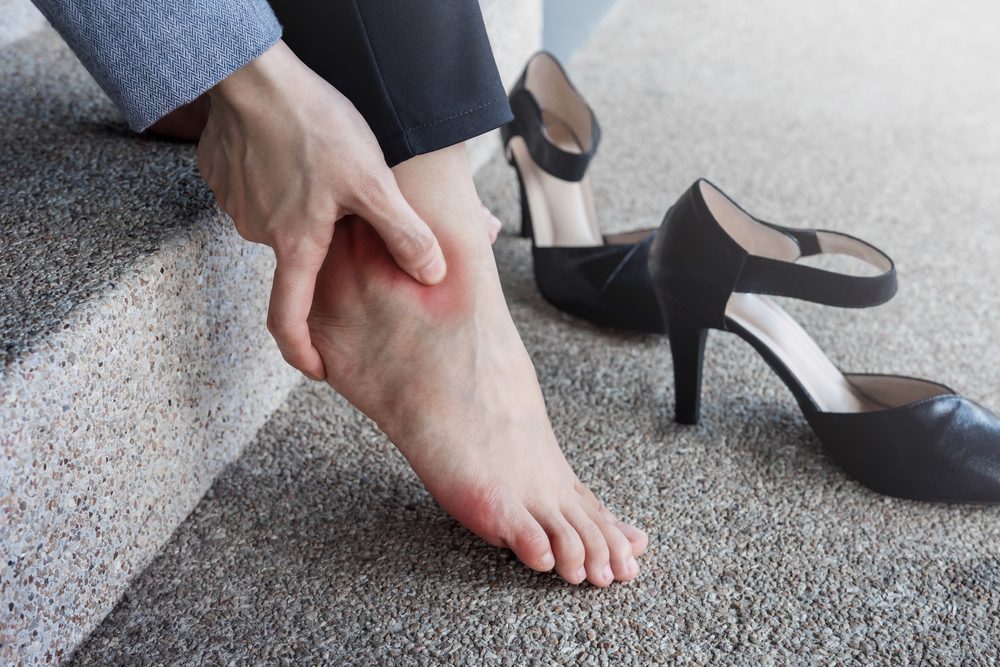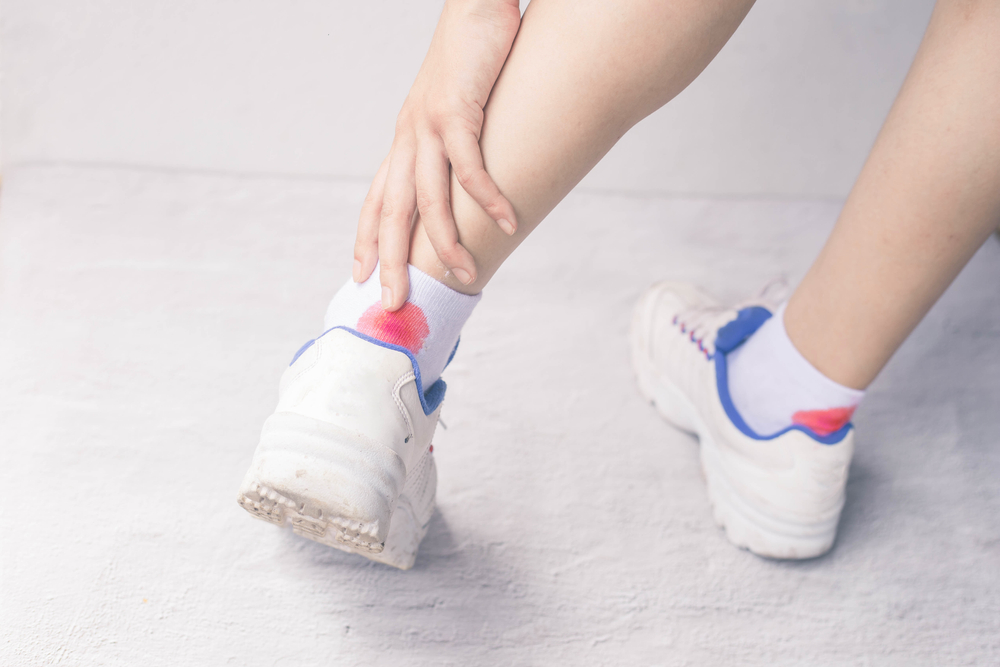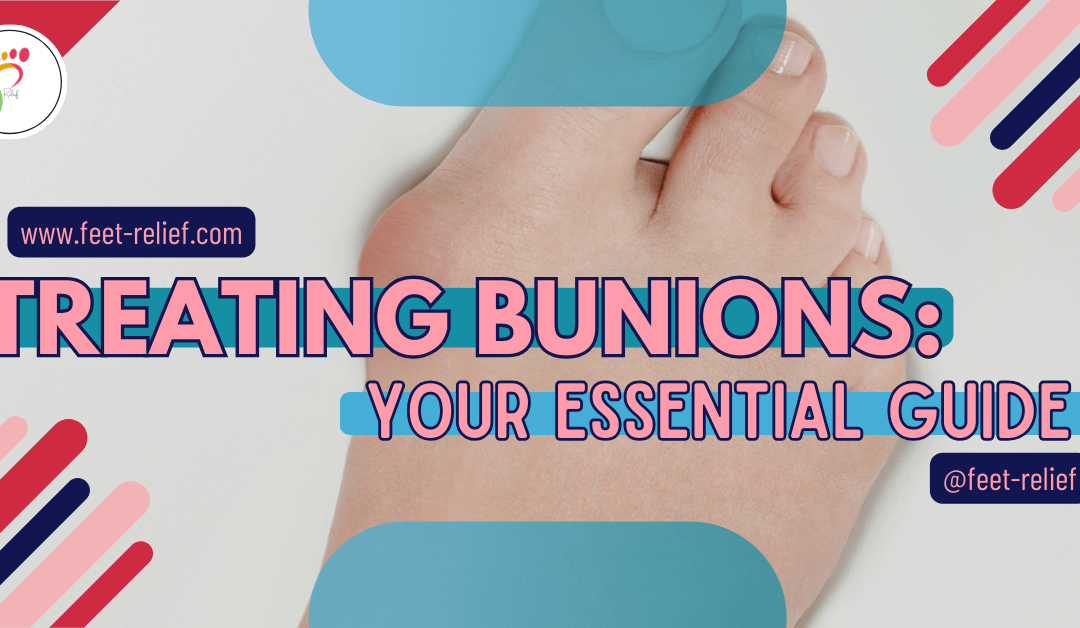
Treating Bunions: Your Essential Guide
Treating bunions early on has always been a priority for me. Having endured the discomfort of walking many miles wearing pointed shoes, I understand the importance in finding relief as soon as possible. Through my experiences, I have gained valuable insights and discovered effective strategies that have made a significant improvement.
Come with me as we explore the causes, prevention, and treatment of bunions. Together, let’s take proactive steps towards redeeming comfort and enjoyment during those long walks.
Treating Bunions: Effective Management and Relief Strategies
Bunions, those bony bumps that form at the base of the big toe, are a common foot deformity with various treatment options. Understanding the causes and mechanics of bunions is the first step in addressing discomfort. They develop from the big toe pushing against the next toe, throwing the joints out of alignment. While bunions may have a hereditary component, wearing tight or narrow shoes can exacerbate the problem, leading to pain and the need for treatment.
Non-surgical treatments are typically the first approach to managing bunion pain and include lifestyle modifications, such as choosing the right footwear. Shoes should have a wide toe box and provide adequate support to alleviate pressure on the bunion. In addition, bunion pads, splints, and custom orthotics can also provide relief and prevent worsening of the deformity. If these measures do not sufficiently control the pain, anti-inflammatory medications may be recommended. Although these methods won’t cure bunions, they can significantly reduce symptoms.
Surgical intervention is considered when bunion pain continues to interfere with daily activities and the quality of life is compromised. A variety of surgical options exist, each tailored to the bunion’s severity and the patient’s needs. It’s essential to consult with a healthcare professional when pain persists, as they can guide you through treatment choices, including surgery, if necessary. Preventative measures post-treatment are crucial and include maintaining proper footwear to prevent recurrence.
Key Takeaways
- Bunions are often treated with lifestyle adjustments, like wearing wide, supportive shoes.
- Non-surgical methods include orthotics and anti-inflammatory medications to relieve symptoms.
- Surgery is an option for persistent pain or severe bunions, complemented by preventative care post-treatment.

Understanding Bunions
Video Credit: @ClickOnDetroitLocal4WDIV
Bunions are a common foot condition that can cause discomfort and affect your daily activities. Proper knowledge about their nature and early detection is crucial to managing their impact on your life.
Definition and Causes
A bunion, medically known as hallux valgus, is a bony bump that forms on the joint at the base of your big toe. It develops when the bones in the front part of your foot move out of place, which compels your big toe to lean toward the smaller ones, leading to the characteristic bump on the joint. The exact causes of bunions are varied, but they may include genetic predispositions, certain foot stresses, and footwear that doesn’t fit properly, often exacerbating the condition. Conditions such as arthritis can also play a role in the development of bunions.
Symptoms and Diagnosis
The most obvious symptom of a bunion is the visible bump on the side of your foot. However, you may also experience pain and soreness, inflammation and redness, a burning sensation, or possibly numbness. Bunions can lead to additional complications like bursitis or the development of hammertoe. Diagnosing a bunion typically involves a physical examination by a healthcare professional. They may also request imaging tests, such as an X-ray, to determine the degree of the deformity. Your doctor can assess how the bunion affects your foot’s alignment and discuss appropriate treatment options with you.

Non-Surgical Treatments
Video Credit: @DrAndrewSchneider
When you’re facing bunion issues, opting for non-surgical treatments can alleviate discomfort and improve your foot health. Let’s explore the most effective non-invasive options.
Proper Footwear
Selecting the right shoes is crucial in managing bunion pain. Your shoes should have a wide toe box to reduce pressure on the bunion and a comfortable fit to prevent worsening of the bunion deformity. Cleveland Clinic suggests that protecting the bunion with pads can also provide relief.
Orthotics
Orthotic devices, both over-the-counter and custom-made, can help realign your foot to take pressure off the bunion. They can also improve arch support and contribute to the stabilization of your foot. For more information on how orthotics can help with bunions, consider the details provided by Healthline.
Pain Management
Nonsteroidal anti-inflammatory drugs (NSAIDs) can be effective in reducing both pain and swelling. Alternating between applying heat and ice can also offer pain relief. HealthPartners outlines tips for managing bunion pain which include these home-based treatments.
Physical Therapy
Physical therapy exercises can enhance the flexibility of your toe and foot muscles. So, strengthening exercises and stretches specifically tailored for bunions can help maintain joint mobility and ease discomfort.

Lifestyle and Home Remedies
Video Credit: @dr.fredericksoriginal8521
Managing bunions involves steps you can take at home to alleviate pain and prevent the condition from worsening. Focusing on proper foot care and incorporating simple remedies can bring relief and protect your feet.
Exercises
Toe Stretches: Flex your toes and then curl them for a 5-second hold, repeating this 10 times. Toe Flexing and Contracting: Press your toes against a hard surface such as a wall, stretching them back, and hold for a few seconds. Perform exercises like these regularly to maintain joint mobility and relieve the pressure on your bunion.
Protective Pads
Using non-medicated bunion pads can shield the bunion from excessive rubbing against your shoes. Opt for gel or moleskin pads, making sure they fit comfortably within your footwear and do not cause additional pressure on the toe joint.
Icing and Elevation
For swelling, apply an ice pack wrapped in a cloth to your bunion for about 15-20 minutes to reduce inflammation. When sitting or laying down, elevate your foot above heart level to decrease swelling. These measures are especially helpful following activities that exert pressure on your feet.

Surgical Options
Video Credit: @Footankle
When conservative treatments for bunions, such as padding, splinting, or medication, are ineffective, surgical intervention may be considered. Your specific condition will determine the type of surgery needed, as well as the preparation and recovery process involved.
Types of Bunion Surgeries
There are several surgical procedures that can correct a bunion. The surgery performed often depends on the severity of the bunion and might include:
- Osteotomy: This procedure involves cutting and realigning the bone to correct the deformity.
- Exostectomy: This surgery includes shaving off the enlarged portion of the bunion, but is usually combined with an osteotomy.
- Arthrodesis: Replacement of the damaged joint with screws or metal plates to correct severe cases.
For more detailed information, Johns Hopkins Medicine provides a helpful overview of bunion surgery and the different techniques that may be used.

Preparation and Recovery
Preparing for bunion surgery typically requires:
-
- Preoperative tests: To ensure you are fit for surgery.
- Fasting: Following instructions on when to stop eating and drinking before the procedure.
Post-surgery, recovery protocols may include:
- Rest: Keeping weight off the foot is crucial.
- Ice, compression, and elevation: This can help manage swelling and pain.
- Physical therapy: Exercises can aid in recovery to regain strength and mobility.
The Cleveland Clinic offers additional details on what to expect during the recovery from bunion surgery.
Risks and Considerations
Every surgical procedure carries potential risks, and bunion surgery is no different. Consider these risks:
- Infection: Always a possibility with surgery.
- Nerve damage: May result in numbness or tingling in the toe.
- Recurrence of the bunion: If post-surgery instructions are not followed.
It is important to discuss these risks fully with your healthcare provider. The Mayo Clinic addresses the necessity of surgery and associated risks, emphasizing the importance of surgery only when a bunion causes frequent pain or interferes with daily activities, which you can find resources on at diagnosis and treatment.

When to See a Doctor
Video Credit: @southfloridaorthopaedicsan8090
If you’re experiencing discomfort or pain in your foot potentially due to a bunion, certain signs indicate it’s time to consult a healthcare provider. Here’s when seeking medical advice is recommended:
- Persistent Pain: If you have continuous or severe pain that doesn’t improve with rest, ice, or over-the-counter pain relievers.
- Visible Deformity: When you notice a bony bump forming at the base of your big toe or if your big toe starts angling toward your other toes.
- Limited Toe Movement: Difficulty or inability to move your big toe, which can affect both your balance and walking.
- Symptoms Affect Daily Activities: If the bunion causes you significant pain or interferes with your daily activities, like walking or fitting into shoes.
Treatment Options: Initial treatments for bunions can often include changes in footwear, padding, or orthotics. In some cases, when these methods are inadequate and your quality of life is compromised, bunion surgery may be necessary. Surgery is aimed at relieving pain and correcting the deformed toe joint.
Regular self-assessment and timely medical consultation can prevent bunions from worsening. Addressing foot pain early with a doctor can lead to a better outcome and may prevent the need for invasive procedures.
Prevention and Long-Term Care
When addressing bunion prevention and long-term care, taking proactive steps can significantly enhance your foot health.
Proper Footwear
- Wear shoes with a wide toe box to prevent crowding of your toes.
- Look for shoes that provide good arch support and a low heel.
- Avoid tight, narrow, or high-heeled shoes that can exacerbate bunions.
Foot Exercises
- Perform strengthening exercises to maintain toe flexibility, such as toe stretches, toe flexes, and resistance exercises.
- Engage in balance training and foot exercises to enhance the stability of your feet.
Protective Pads
- Utilize gel-filled or moleskin pads to protect the bunion area from additional pressure.
- Over-the-counter arch supports or orthotics can help distribute pressure more evenly.
Medication and Self-Care
- For bunion pain, consider OTC pain relievers like ibuprofen or acetaminophen.
- Apply ice packs to reduce swelling and alleviate discomfort.
Regular Check-Ups
- Schedule regular appointments with a podiatrist to monitor bunion progression.
- In case of increased pain or deformation, a podiatrist can suggest appropriate interventions.
By integrating these strategies into your daily routine, you can help manage your bunion symptoms and potentially prevent further progression. If discomfort persists or worsens, consult a healthcare professional for personalized advice and treatment options.
Taking Control of Your Bunion Journey
Treating bunions and embracing preventative care are essential steps in proactive foot health management. By understanding the nature of bunions, including their causes and available treatment options, we empower ourselves to seek relief and enhance our quality of life.

Take control of your bunion journey today. Consult with a healthcare professional for personalized guidance and support tailored to your needs. Here’s to walking comfortably and confidently every step of the way.
Frequently Asked Questions
Video Credit: @barefootstrength
When dealing with bunions, common concerns range from natural remedies for size reduction to self-care for easing discomfort. Explore the strategies below to manage and treat your bunions effectively.
What are the best natural remedies for reducing bunion size?
Applying ice and maintaining a healthy weight can help manage the size and discomfort of bunions. Padding and wearing roomy, comfortable shoes that provide ample toe space are also beneficial.
What self-care strategies can alleviate bunion discomfort?
Adopting self-care strategies such as using bunion pads or custom orthotics can provide relief, while over-the-counter pain relievers like ibuprofen may reduce inflammation and pain.
How can one ease bunion pain while engaging in walking activities?
Supportive footwear and cushioned socks can minimize bunion pain during walking. Consider shortening your stride to reduce pressure on the affected area.
What are effective nighttime treatments for throbbing bunion pain?
For throbbing pain at night, a warm foot soak followed by gentle stretches or massage may provide relief. Night splints designed for bunions can also help to alleviate discomfort.
Can lifestyle changes impact the formation or progression of bunions?
Yes, embracing lifestyle changes like choosing appropriate footwear and maintaining a normal body weight can slow the progression of bunions and even prevent them from forming.
Are there any at-home methods effective for removing bunions?
Bunions are permanent unless surgically corrected, but at-home treatment options can ease discomfort and prevent worsening. These include toe spacers, bunion pads, and exercises to maintain joint mobility.








